We have much more to do and your continued support is needed now more than ever.
Fire, Water, and Public Watersheds
Community collaboration illustrates path forward as western fires intensify
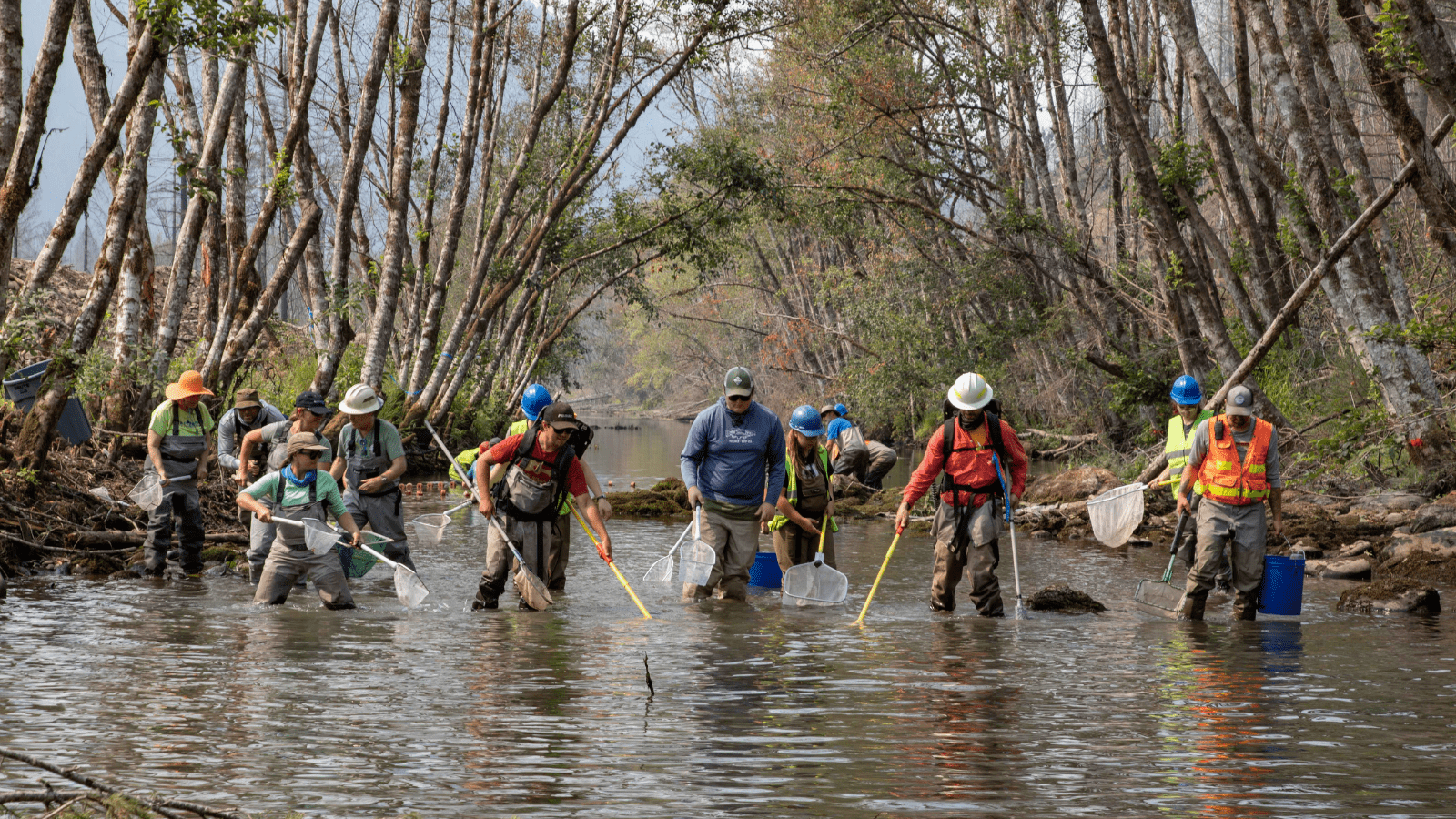
Almost a year has passed since Oregon woke up to red, Martian skies. The smoke has cleared but anxiety is still thick in the air.
On Sept. 8, 2020, extreme drought, multiple ignitions, and an unprecedented windstorm sparked wildfires across the Western Cascades. The fierce, easterly winds blew three massive wildfires downhill, towards towns built in the forests. The Riverside Fire, Beachie Creek Fire, and Holiday Farm Fire, each blazed down the mountainsides, following the contours of the Clackamas, North Santiam, and McKenzie rivers, respectively.
These rivers are vital sources of drinking water, providing nearly 750,000 Oregonians with some of the cleanest water in the nation. They are also spring-fed, cold-water climate refugia for native trout and other salmonid species.
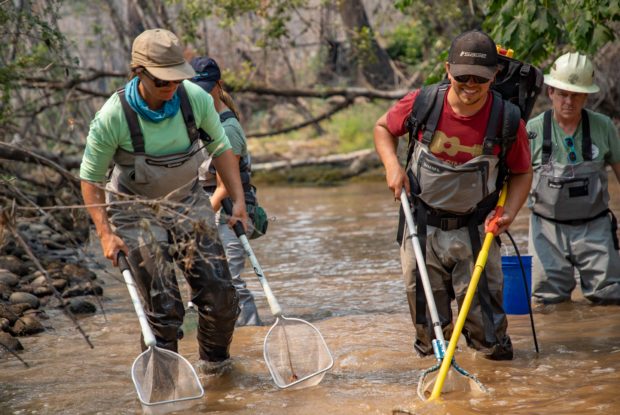
With every heat wave, with longer and more frequent droughts, we in the Pacific Northwest realize our rains are no longer enough to dampen the flames. As we enter a new phase in the eternal elemental dance between fire and water, it seems fire now holds the upper hand.
Yet, on the McKenzie River, as our communities emerge from these disasters, a network of local nonprofits, government agencies, landowners, the Eugene Water & Electric Board (EWEB), and the University of Oregon has developed strategies to reduce the long-term effects the climate-change fire regime will wreak upon our watersheds. The first step was to establish partnerships to facilitate collaboration during crises.
Building resilience, one community at a time
“Back in 2000, Eugene was one of the first larger metropolitan areas to take its watershed as part of its water infrastructure and to recognize that,” EWEB’s Watershed Restoration Program Manager Karl Morgenstern said. “Now we have the trust and relationships to do projects like large-scale floodplain restoration. Other places are facing disasters and those relationships are not in place, and they’re having to build those in the midst of a disaster and that just adds complexity and delays action.”
The McKenzie River’s Pure Water Partners (PWP) program assessed fire-damaged properties just days after they burned. In a matter of weeks – after it was safe to enter the area – EWEB, the McKenzie River Watershed Council, McKenzie River Trust, and the Upper Willamette Soil and Water Conservation District installed erosion control measures to prevent toxic ash and debris from burned homes from entering the river – the sole source of drinking water for 200,000 people in Eugene. EWEB installed additional water quality monitoring stations to detect contaminants.
In the year since the fire, the PWP works with over 250 landowners in the McKenzie River Valley to assess fire damage, control invasive species, reduce fuels to support FireWise properties, and install additional erosion control measures. They’ve replanted 89 riparian properties. EWEB provides loans and incentives for folks to rebuild their homes and septic systems farther back from the river.
In response to the wildfires, our communities are showing their strengths – but how will our watersheds hold up?
Nothing new about wildfires
Historically, western watersheds are well-accustomed to fire.
“These systems are resilient. They’ve seen fire for eons, so this is nothing new,” said Willamette National Forest Lead Hydrologist Johan Hogervorst. “I think some of those immediate impacts, to people, to places, to our homes, are quite startling, but the watershed itself is going to heal very quickly. The plants are going to come back. It’s going to take a while for the forest to regenerate – we’re going to help that wherever we can – but fire is not a new thing here.”
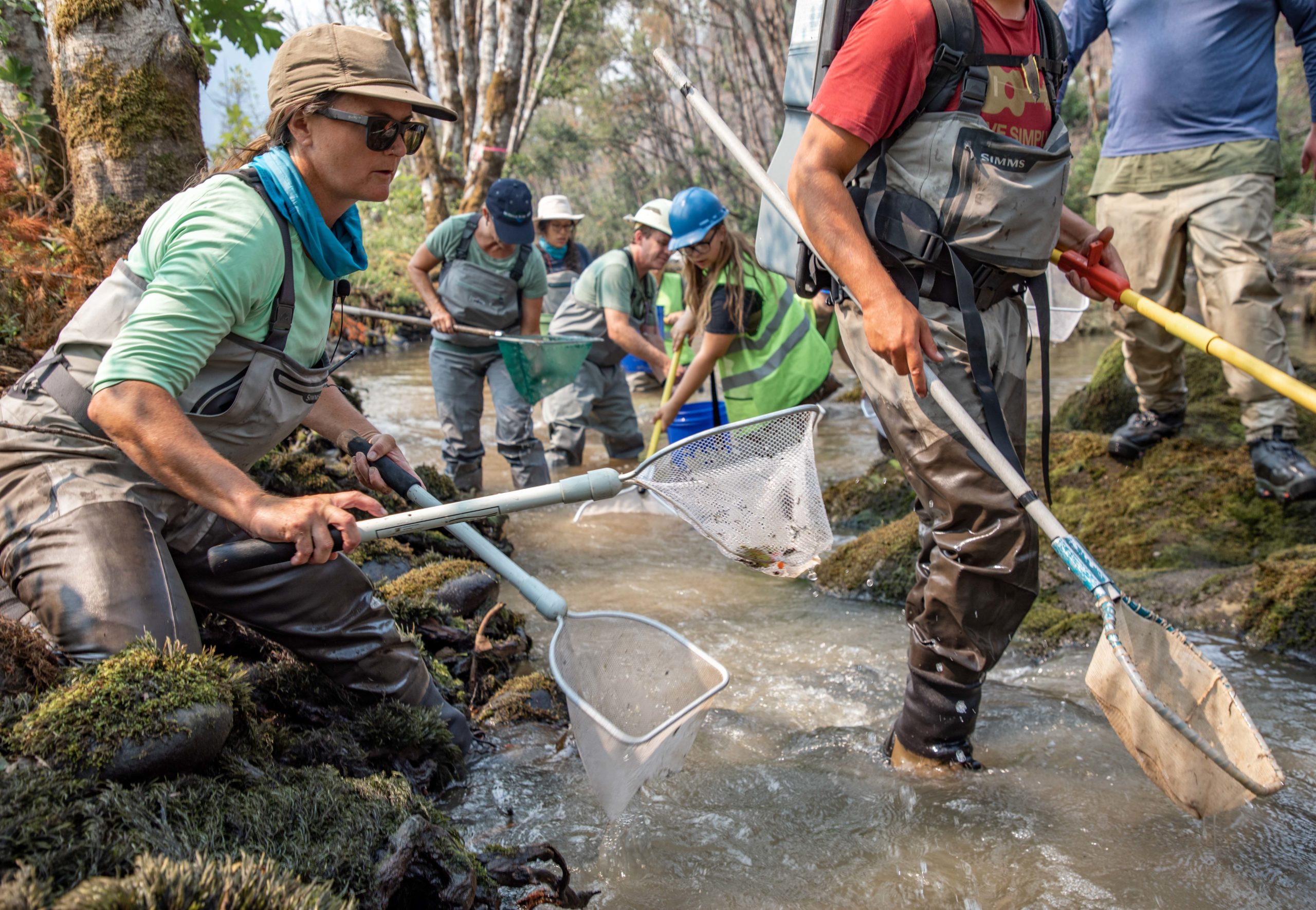
The truth is our watersheds need healthy forests, and healthy forests need fire. Fire clears forest understories, allowing mature trees to grow larger. Certain conifers need fire to melt the waxy coverings off their serotinous cones to release their seeds. Fire creates diverse habitats for all kinds of wildlife: snags for woodpeckers and wood-boring insects, new grasslands for large mammals to hunt and forage, and sunny forest openings where butterflies and reptiles can bask.
In the short-term, wildfires can even benefit our threatened and endangered trout and other salmonids. Burned trees fall into the waterways, forming complex habitats where juvenile fish can hide and hunt. Logjams can also create pools of cool, deep water – great resting sites for spawning fish journeying upriver. Sunken trees can form riffles that stir up and oxygenate the water, promoting egg development.
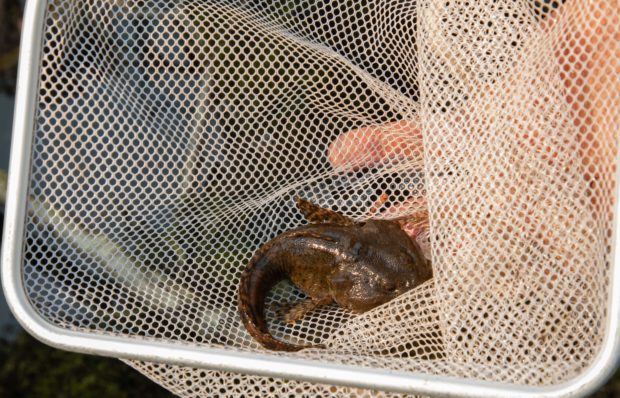
“The thing with salmon is they have this diverse life structure. They’ve been growing this whole time to evolve to these different kinds of natural distractions that happen to their world,” said EWEB Water Resources Supervisor Susan Fricke.
Megafires: A new normal
Although salmon have evolved with fire, their populations are startlingly low. Combined with a century of development that has degraded our watersheds’ ecosystem functions, intense stochastic events like the Holiday Farm Fire could wipe out entire genetic populations of salmon.
“As European-Americans moved in, we started developing the [McKenzie] Valley. We started pushing the river to one side, removing the wood out, doing a lot of riparian logging,” said Kate Meyer, Fisheries Biologist for the McKenzie River Ranger District.
Intense wildfires — and the megafires we are increasingly experiencing today — can further degrade these weakened watersheds. Burned hillsides become more likely to collapse without trees to hold their soils in place. Landslides and mudflows can smother a river with sediment, choking fish, their eggs, and introducing high nutrient loads that encourage harmful algae and bacterial growth.
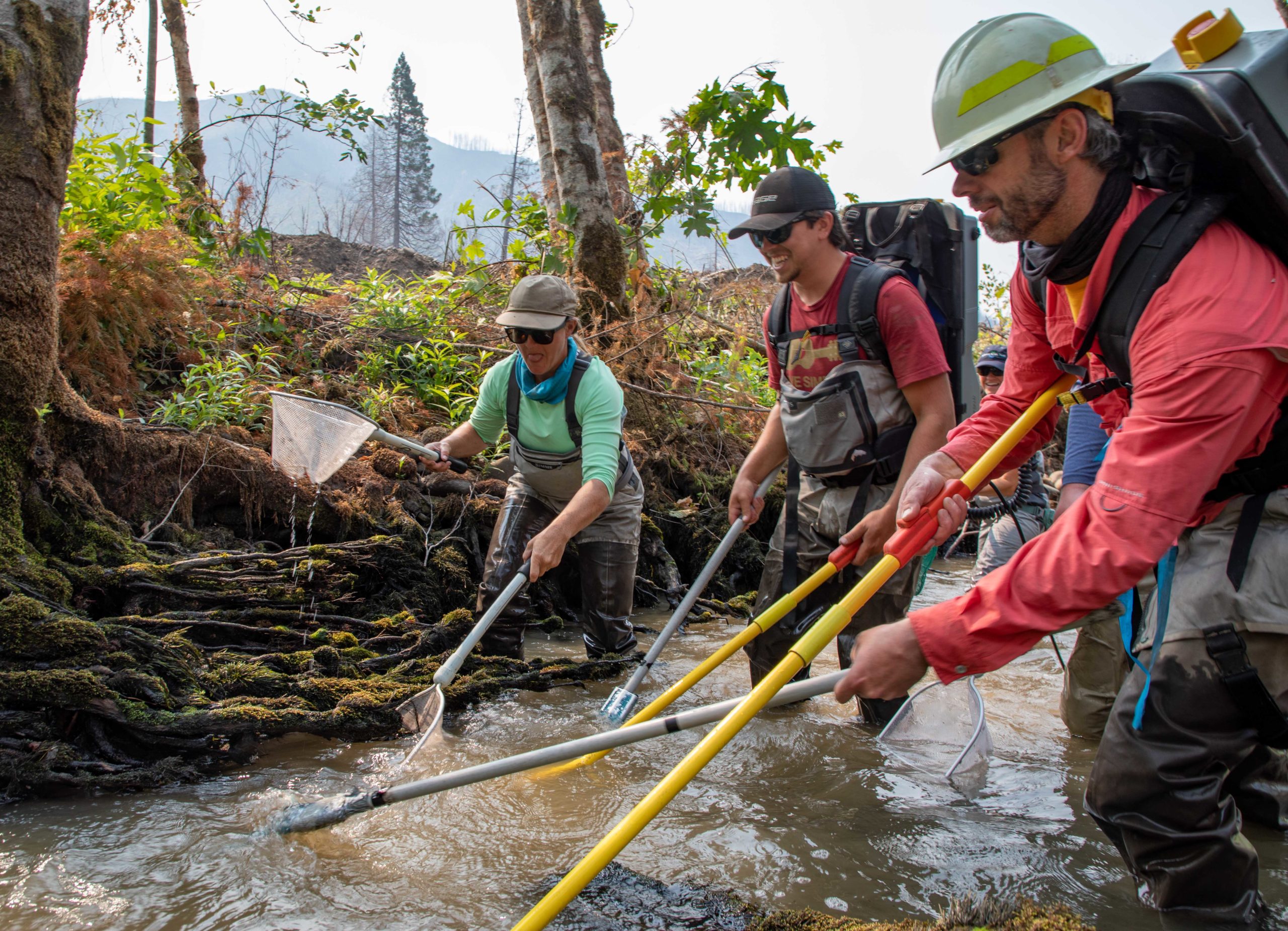
When riparian forests burn, they become less effective at shading streams and riverbanks. Water temperatures rise, also facilitating the growth of bacteria and toxic algae. Conditions improve for invasive fishes that predate upon native ones.
With reduced snowpacks and hotter summers, the loss of riparian forests is another major blow to the survivability of our native trout and salmon species. According to Save Our Wild Salmon (a close partner with the National Wildlife Federation), salmon and steelhead begin to suffer harmful effects when water temperatures exceed 68° Fahrenheit. Salmon eggs die in water temperatures above 56oF.
The key elements: earth, water, and fire
The effects of climate change are only just beginning to accelerate the war between fire and water. To bolster the watershed’s defenses, we can pull in another element, earth. Research and experience on the ground show that restoring floodplains and adjacent wetlands can greatly improve water quality and improve the landscape’s ability to withstand and recover from fire and drought.
For example, the McKenzie River’s Pure Water Partners (PWP) are digging up incised river channels and flattening floodplains, recreating healthy networks of meandering waterways that will capture excess sediment from landslides, keep the landscape wetter and cooler, and encourage riparian forests and wetlands. This is a new kind of conservation hydrology called “Stage Zero” restoration projects, reestablishing natural ecosystem processes and resetting geomorphic trajectories to pre-development levels.
With changing precipitation patterns and the loss of snowpack, the goal is to create a system that has resilience to these disturbances that are occurring at a faster rate than we thought.
The first Stage Zero restoration project in 2015 focused on 780 acres and 4.5 miles of the South Fork of the McKenzie River, an important tributary for spawning salmon. Recent surveys before the project found only a few dozen redds, but just a couple weeks after implementing that project there were 241 Chinook redds, Meyers explained, “so we were just blown away by that!”
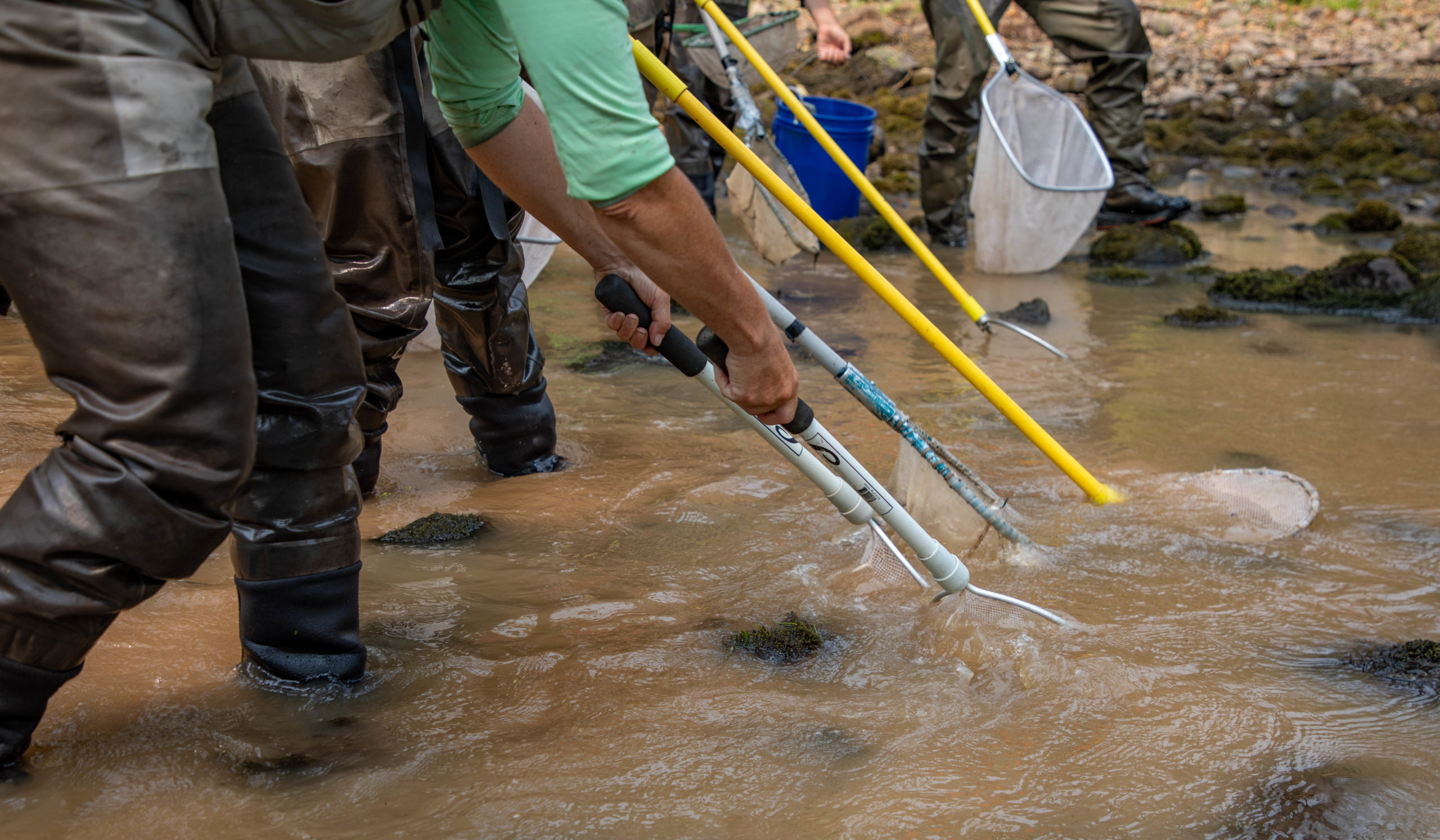
Proving their success, the team moved on to Deer Creek, one of the McKenzie’s largest tributaries. Before the project, salmon had not been observed spawning there since the 1990s. They returned as soon as construction was finished.
“What we’re seeing for these Stage Zero restoration projects, is if you build it, they will come,” Fricke said.
When the Holiday Farm Fire swept through the South Fork project area, Meyer and her team feared their work had been destroyed. On the contrary, restoring the floodplain made it more resilient to fire.
“When we were finally able to get on the ground and see the project, it really looked like an oasis,” Meyer said. “There’s a lot of live trees remaining. A lot of the understory vegetation was unimpacted…because there’s so much water and hydrologic connectivity, I think that really buffered the fire effects through that project area.”
Morgenstern explained further:
“The model is to look at the big tributaries — those that are big enough and have a low gradient valley that these projects would be effective…and even for those smaller creeks …The whole idea is to try to do this across as many of the creeks as we can where we can get access and make these projects happen. Because our prime directive at EWEB is to provide reliable safe drinking water to our community. That means protecting water quality at the source — miles upstream from town — and all the way to the tap at community homes and businesses.”
In the McKenzie Valley, nearly a year after the Holiday Farm Fire, innovative construction projects are rapidly transforming the river back to its old ways.
“The more floodplains the better,” EWEB’s Susan Fricke said. “As the water is able to spread out over the floodplain, you increase infiltration capacity and its buffering capacity to be able to deal with these big natural disasters. We are increasing that resiliency when you let the whole ecosystem function as it’s supposed to.”
. . .
Adam Spencer is a Communications Specialist for the Eugene Water & Electric Board who focuses on the utility’s stewardship of the McKenzie River, where he grew up.
The innovative partnership that’s helping the watershed in the McKenzie Valley is part of a trend emerging throughout the West. The National Wildlife Federation coordinates the Healthy Headwaters Alliance, a coalition including Eugene Water and Electric Board and other western water innovators, utility executives, federal land managers, scientists, community and water justice leaders, and conservation professionals, who share a commitment to equitable, science-based actions to build resilience back into western forested headwaters.





















